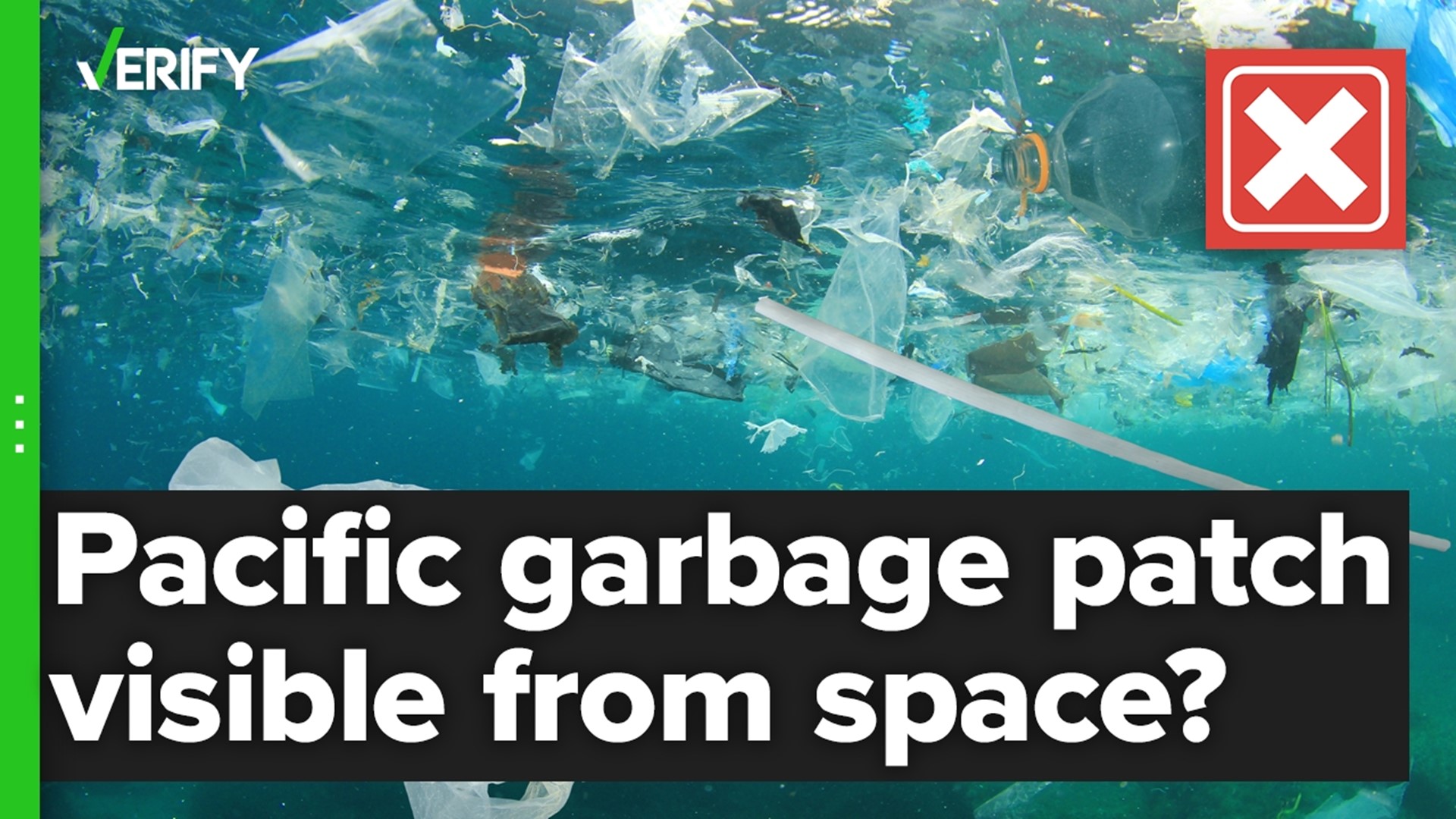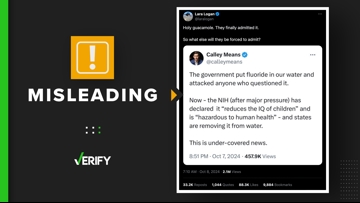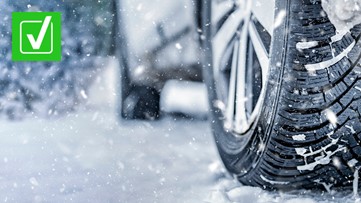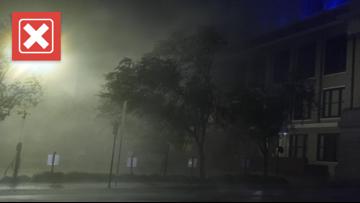Did you know there’s a gigantic body of floating plastic particles in the Pacific Ocean?
According to The Ocean Cleanup, a nonprofit organization dedicated to cleaning up the world’s oceans, the Great Pacific Garbage Patch (GPGP) is the largest of the five offshore plastic accumulation zones in the world. The patch is located halfway between Hawaii and California.
The patch covers an estimated surface area of just over 617,762 square miles. While it is difficult to measure the exact size of the garbage patch because the boundaries are constantly shifting, that surface area is roughly twice the size of Texas or three times the size of France, The Ocean Cleanup reported.
According to Google Trends, the top question people searching had about the garbage patch was its visibility from space. Across Twitter, some have even claimed the accumulation problem is so huge, it’s viewable from the International Space Station.
THE QUESTION
Can you see the Great Pacific Garbage Patch from space?
THE SOURCES
- National Oceanic and Atmospheric Administration (NOAA)
- Dr. Sarah-Jeanne Royer, a bio-geochemist and oceanographer with the Scripps Institution of Oceanography
- Nick Mallos, senior director of the Trash Free Seas program at Ocean Conservancy
- Nancy Wallace, marine debris program director at National Oceanic and Atmospheric Administration
- The Ocean Cleanup, a nonprofit dedicated to ocean conservation
- Oceana, an ocean conservation organization
THE ANSWER
No, you can’t see the Great Pacific Garbage Patch from space.
WHAT WE FOUND
The Great Pacific Garbage Patch developed because of the North Pacific Gyre, which is a system of circulating currents. The currents pick up large amounts of microplastic debris, or extremely small pieces of plastic, and some larger pieces of floating trash. The flotsam then circulates together within a vortex, slowly growing as more and more debris is gathered.
The microplastics come from larger items that break down, Nick Mallos, senior director of the Trash Free Seas program at Ocean Conservancy, told VERIFY.
To better understand the Great Pacific Garbage Patch, it’s simpler to think of it like a soup, Sarah Jeanne-Royer, with the Scripps Institute of Oceanography, told VERIFY.
“I guess we can see it as a soup of microplastics … It's where you have floating debris of plastic basically moving at the surface and slightly under the surface of the water. So there's a lot of movement, and you get the microplastics going up and down in a couple of meters of water at the surface,” Jeanne-Royer said.
Even though the GPGP is very large, it can’t be seen from space because it isn't one giant mass of trash, nor is it a floating island, according to Oceana. Oceana is an ocean conservation group that in 2019 posted a blog dispelling three myths about the patch.
“Because microplastics are smaller than a pencil eraser, they are not immediately noticeable to the naked eye,” says the National Oceanic and Atmospheric Administration (NOAA) website. “It’s more like pepper flakes swirling in a soup than something you can skim off the surface.”

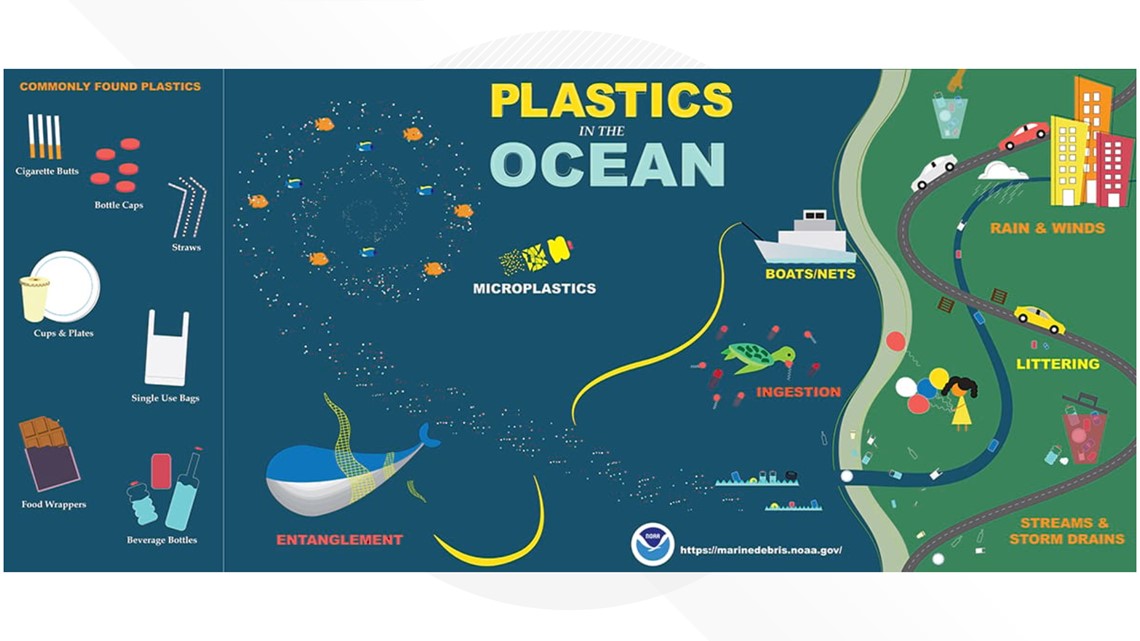
Mallos told VERIFY the patch can’t be seen from space for that very reason - because most of the vortex is made up of microscopic particles.
“Some places you do see large ropes and fishing nets floating up the surface. You'll see large pieces of plastic that may have fallen overboard – laundry baskets, car bumpers, anything you can imagine you might find out there. But in general, what you actually find is a lot of very small pieces of plastics that have broken up into small pieces, like from the larger box they were as they circulate in the ocean over days, months, years,” Mallos said.
Nancy Wallace, with NOAA, told VERIFY the garbage patch isn’t something you could even see from a satellite because the trash particles are so small.

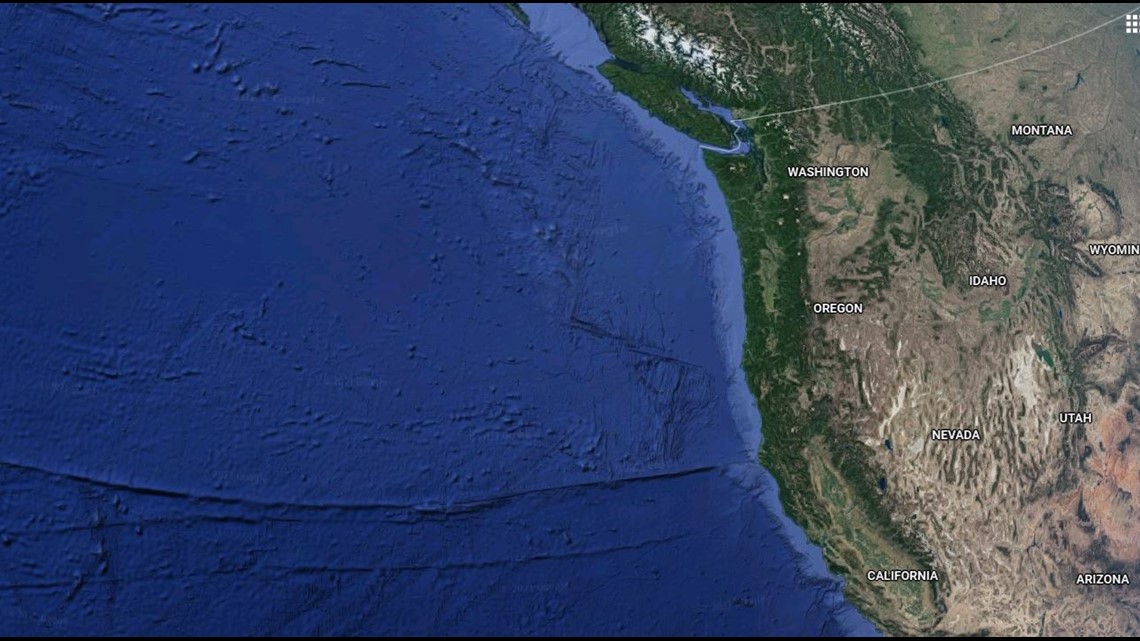
But just because you can’t see the garbage patch from space doesn’t mean it’s not a problem for the environment.
The misconception that the garbage patch is a floating island has also made conservation more difficult, Mallos said. He said it’s just not true that someone can just take a net and scoop up physical garbage.
“The small stuff is even more concerning, because it is incredibly hard, if not impossible to clean up. And we know the small stuff can be eaten by pretty much every animal and organism in the ocean. Whereas the larger stuff, it's a much smaller selection of marine wildlife that can eat it. So just because it's smaller does not mean it's a smaller problem. And in fact, it may just be the opposite. The smaller plastics become the much greater wider risks they pose to the entire marine ecosystem,” Mallos said.
